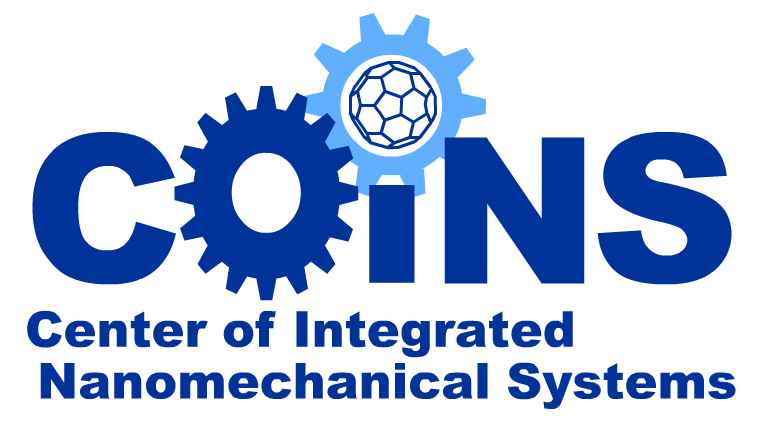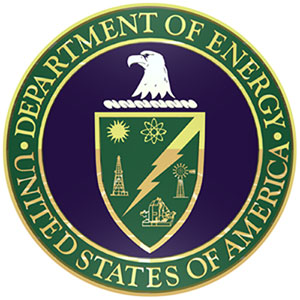Zettl Group Page |
Research Highlights
|
 |

|  |
 |
 |
 |
Screening-engineered Field-effect Solar Cells
W. Regan, S. Byrnes, W. Gannett, O. Ergen, O. Vazquez-Mena, F. Wang, A. ZettlDepartment of Physics, University of California at Berkeley
Materials Sciences Division, Lawrence Berkeley National Laboratory
Center of Integrated Nanomechanical Systems, University of California at Berkeley
Berkeley, CA 94720, U.S.A.
The following media files are intended for public access, and may be reproduced as long as proper credit is given: "Courtesy Zettl Research Group, Lawrence Berkeley National Laboratory and University of California at Berkeley." All rights reserved © 2012.
Introduction
Solar photovoltaic (PV) conversion is poised to be a primary source of electrical energy in the 21st century, but the installed cost of PV cells is not yet at parity with hydrocarbon sources (mainly coal and natural gas). To make an efficient PV cell, you must (1) absorb all the sunlight you can above a certain cutoff energy, storing that energy by promoting electrons to a higher energy state and (2) be able to extract those “excited” electrons from the cell so they can do useful work (e.g. powering your appliances). To meet the first requirement, the active material of a solar cell is chosen to be a semiconductor with an electronic bandgap near the peak of the solar spectrum. To meet the second requirement, you introduce some asymmetry in your semiconductor to push the excited electrons one way or the other, most often by forming a p-n junction (an interface between regions with a deficit or an excess or electrons). Despite an abundance of semiconductors with near-ideal bandgaps, only a few semiconductors can be made into high efficiency PV cells with high quality p-n junctions, either by chemical doping (Si, GaAs, InP) or by heterojunction formation (such as n-CdS with p-CdTe or p-CIGS). Several other promising PV materials -- many of which (metal oxides, sulfides, and phosphides) also happen to be low-cost, earth-abundant, and non-toxic -- are incompatible with chemical doping and form poor heterojunctions.
We have developed an alternate route to effectively dope any semiconductor, including hard-to-chemically-dope materials, by applying an electric field through a carefully designed partially-screening electrode. Electric fields have long been used to modulate carrier concentration (and hence change the local doping) of semiconductors in the transistor industry, notably in metal-insulator-semiconductor field-effect transistors (MOSFETs). We adapt this familiar concept to PV cells by geometrically structuring the top electrode of the cell to permit an electric field to pass through the electrode and locally “dope” the semiconductor, and the resulting cells are called screening-engineered field-effect photovoltaics (SFPV). We demonstrate two distinct geometries of SFPV cells, extremely narrow top contacts or “nanofingers” (type A) and extremely thin top contacts such as graphene (type B), which allow the electric field to bleed around or penetrate the contact. Additionally, we propose a novel self-gating strategy to internally power the gate field, simplifying practical implementation of SFPV cells. Our theoretical and experimental studies of this new method, using silicon as a proof of concept, indicate that this may be a compelling route to low-cost, high-efficiency photovoltaics and open the door to terawatt-scale deployment.
Additional information can be found in a feature article by Lynn Yarris at Lawrence Berkeley National Laboratory, found here.
Artwork
If you use any of the following images, please include the credit "Courtesy Zettl Research Group, Lawrence Berkeley National Laboratory and University of California at Berkeley."
 |
Rusty photovoltaics (high res.) (TIFF 2.9 MB) |
 |
Electrostatic potential profile in a strongly-gated nanowire SFPV cell (Schottky contact to n-type Si). Blue regions have become inverted to p-type, and an added potential barrier is evident underneath the Schottky contact, a sign that the contact is narrow enough for gating to be effective. The 2D finite-element simulations were performed in COMSOL (rendering was extruded to 3D in Adobe Illustrator). Nanowire SFPV potential (high res.) (TIFF 1.2 MB) |
 |
"The next generation of photovoltaics": The SFPV concept represented symbolically as a merging of two well-known electronic components, metal-oxide-semiconductor field-effect transistors (MOSFETs) and standard photovoltaic cells. The resulting SFPV symbol shows a photovoltaic cell with an added gate. SFPV symbols (high res.) (TIFF 2.5MB) |
Still Images
If you use any of the following images, please include the credit "Courtesy Zettl Research Group, Lawrence Berkeley National Laboratory and University of California at Berkeley."

|
Schematics of the two distinct geometries possible for SFPV cells, ultranarrow contacts (type A) and ultrathin contacts (type B). Both designs can be implemented for any semiconductor. SFPV Geometries (high res.) (TIFF 1.62 MB)
|

|
Theoretical details for the two distinct SFPV geometries, type A (nanofinger) and type B (ultrathin, e.g. graphene). Potential profiles for silicon SFPV cells show the dramatic impact of tailoring the contact geometry. As contacts become narrower or thinner (moving left to right in parts b and e, respectively), open circuit voltage and performance increase significantly. The efficiency of silicon Schottky cells can be improved from around 8% to nearly 20% (in both type A and B geometries). As shown in part c, the effect is so strong that even initially ohmic contacts can be made into reasonably efficient solar cells. These trends bode well for SFPV implementation with other semiconductors. SFPV theory (high res.) (TIFF 4.87 MB)
|

|
A schematic and current-voltage curves for a p-type silicon Schottky barrier SFPV, showing significant performance increase upon application of a small gate voltage (curve labels). Gate power consumption is negligible relative to the cell current, an important criterion for practical applications. Silicon Schottky SFPV (high res.) (TIFF 1.29 MB)
|

|
Cuprous oxide (Cu2O) is a highly-abundant but hard-to-dope semiconductor with a bandgap of about 2.1eV, making it interesting for solar PV. An image of Cu2O grown by thermal oxidation is shown on the left, and an optical micrograph of a Cu2O nanofinger SFPV is shown on the right. We have demonstrated a 60% relative efficiency increase with Cu2O SFPV. Cu2O SFPV (high res.) (TIFF 2.94 MB)
|

|
A type B SFPV cell was constructed using monolayer graphene on n-type Si. A significant increase in current and a modest increase in voltage is evident for moderate gating. Performance is likely limited by the high series resistance of as-grown monolayer graphene, though many strategies exist to address this issue. Monolayer graphene SFPV (high res.) (TIFF 3.13 MB)
|

|
Our self-gating method allows the gate to be powered internally and lets the gate voltage track the local ground appropriately for SFPV cells wired in series. This image shows a proof of concept demonstration, with open circuit voltage increasing significantly as the gate is toggled from ground to the cell output. Self-gating SFPV (high res.) (TIFF 2.92 MB) |
Acknowledgements
This research was supported in part by the Director, Office of Energy Research, Materials Sciences and Engineering Division, of the US Department of Energy under contract No. DE-AC02-05CH11231 which provided for theoretical analysis, design of the experiment, and characterization of the cells; by the National Science Foundation within the Center of Integrated Nanomechanical Systems, under Grant EEC-0832819, which provided for Cu2O synthesis; and by the Office of Naval Research (MURI) which provided for graphene synthesis and assembly. F.W. and S.B. acknowledge support through a Department of Energy Early Career Award, DE-SC0003949. W.R. and S.B. acknowledge support through a National Science Foundation Graduate Research Fellowship, and O.V. acknowledges support by the Swiss National Science Foundation (SNSF).
External Links
The original Nano Letters article published online on July 16, 2012, and the Supporting Information online.
Last modified: Mon July 30 18:45:00 Pacific Daylight Time 2012